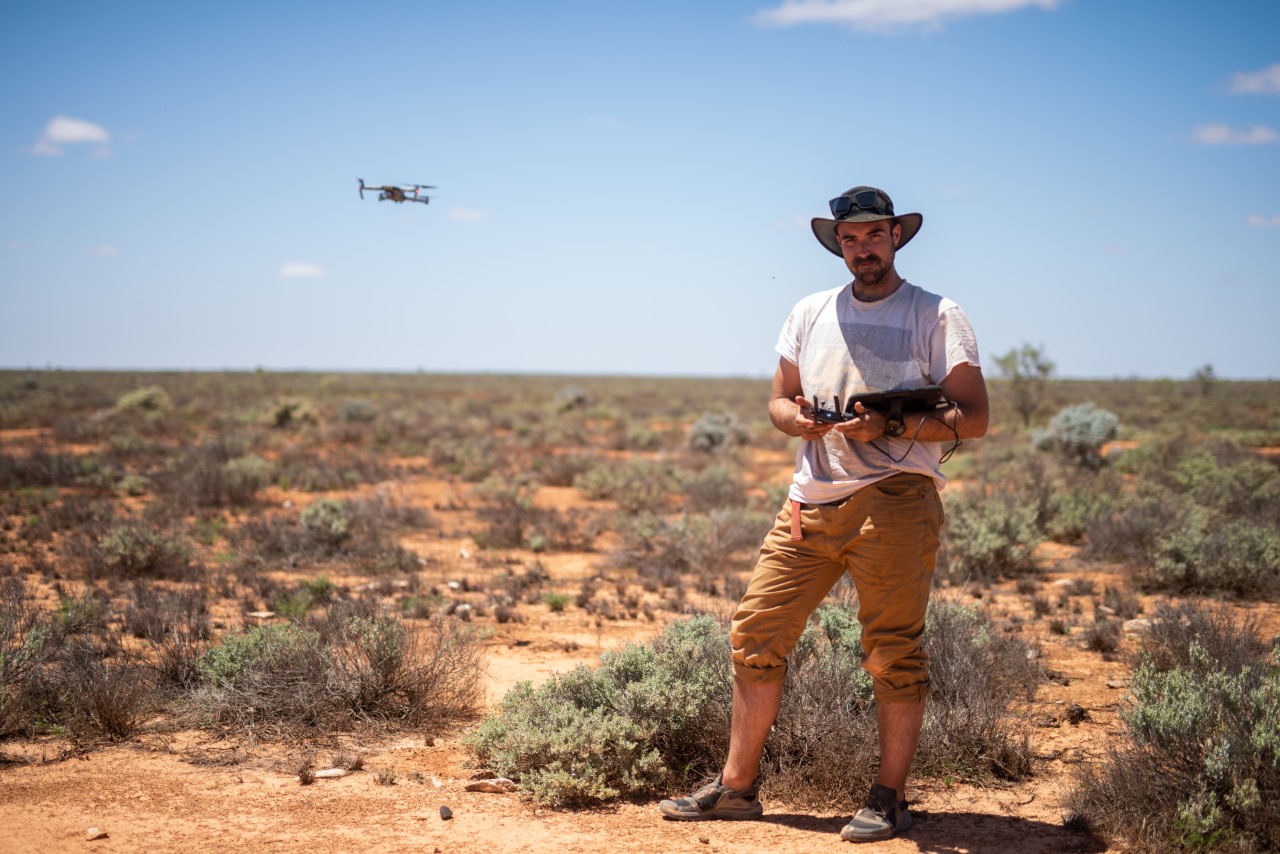Curtin PhD student Seamus Anderson has recovered a freshly fallen meteorite using a drone and machine learning. This is a big deal, and it was not easy!
The fall
The meteorite fell in the Nullarbor on April 1st, 2021. Because of the relatively poor observing conditions, the fall area was not very well constrained: 90% confidence area is 5.1 km². Yes, this means finding 3cm rock in an a area the size of 700 football fields! As traditional searching would have been very tedious, it was the perfect real world test case for the drone searching method Seamus had been developing.
Detecting the meteorites in the images.
Machine learning algortihms are typically fed an insane amount of training data (think Google recognizing cats in online images). How do you train an algorithm to detect a special kind of rocks amongst other rocks? Unlike cats, there is no large online database of nice meteorite pictures. You might be able to find a few meteorite pictures online, but they are usually not in their natural environment, and have usually been cut by those pesky cosmo-chemists wanting to analyse them.
Building up a training set had to be done the hard way. This means taking real meteorites and good looking meteowrongs (usually meteorite-shaped rocks painted black), tossing them on the ground, taking pictures of them with a drone, and annotating the images. Over time, by repeating this process in different locations, a large image database of meteorite-like objects is built, and the machine learning training process becomes more general. It can be re-used at different fall sites.
High-availability flying
The surveying phase needs to make the most of the sun at high elevations. In practice this means flying 15 back to back sorties a day, each ~30 minutes long. In between each, a lot needs to happen, so no break for the pilot: data transfert, battery cycling, and obviously making sure the pictures captured remain at top quality.
Outback High-Performance Computing
Nowadays scaling the processing of large amounts of data is easy. You can just turn another virtual machine on with the click of a button, or ask for more nodes on your HPC cluster. Doing this in the outback is another story, with limited power, limited computational power, and no internet!
The machine learning training and inference have to rely on packing a good old physical computer with a beefy graphics card. Pack 10 of them to go faster you say? Then at 0.5kW each how do you source the power for running them, knowing that whatever power you get from your small generator and solar panels also has to recharge the drone batteries, run the fridge, and keep all auxiliary equipment running?
People
Did I mention that all of that was done by a team of 3 in a single car? This small team of had to take care of drone piloting (it’s aumotated but we are legally required to keep our hands on controls at all times), the training data collection, the image review, the auxialiary drone flying, the battery charging, generator filling, the visit to promising candidates…
And if your day wasn’t full enough you still have to cook dinner, there is no food delivery in the middle of the desert!
Where to now?
Seamus has demonstrated that his approach is working, but at the same time that it is very much viable in terms of time and money compared to traditional human-based meteorite searching.
Next step is to streamline the process, optimising the bottlenecks like inference. Hopefully we will be able to find some more meteorites observed by the DFN for which we have not had the manpower to search on foot. Maybe the solution in some falls close to civilisation is to take the data to a HPC centre?
True doing this on the Nullarbor plateau has removed a number of complicating factors like trees, and large differences in terrain elevation. But you can’t have all the elements stacked against you for your first try can you? So the step after finding a few more in the Nullarbor will be to do this in more challenging environments. We are looking forward to share this technology amonst our GFO partners.
And finally we cannot wait to see what potential applications it could have outside of meteorite searching, as this method has already shown it can find not only meteorites but any unusual things.
Hadrien Devillepoix

